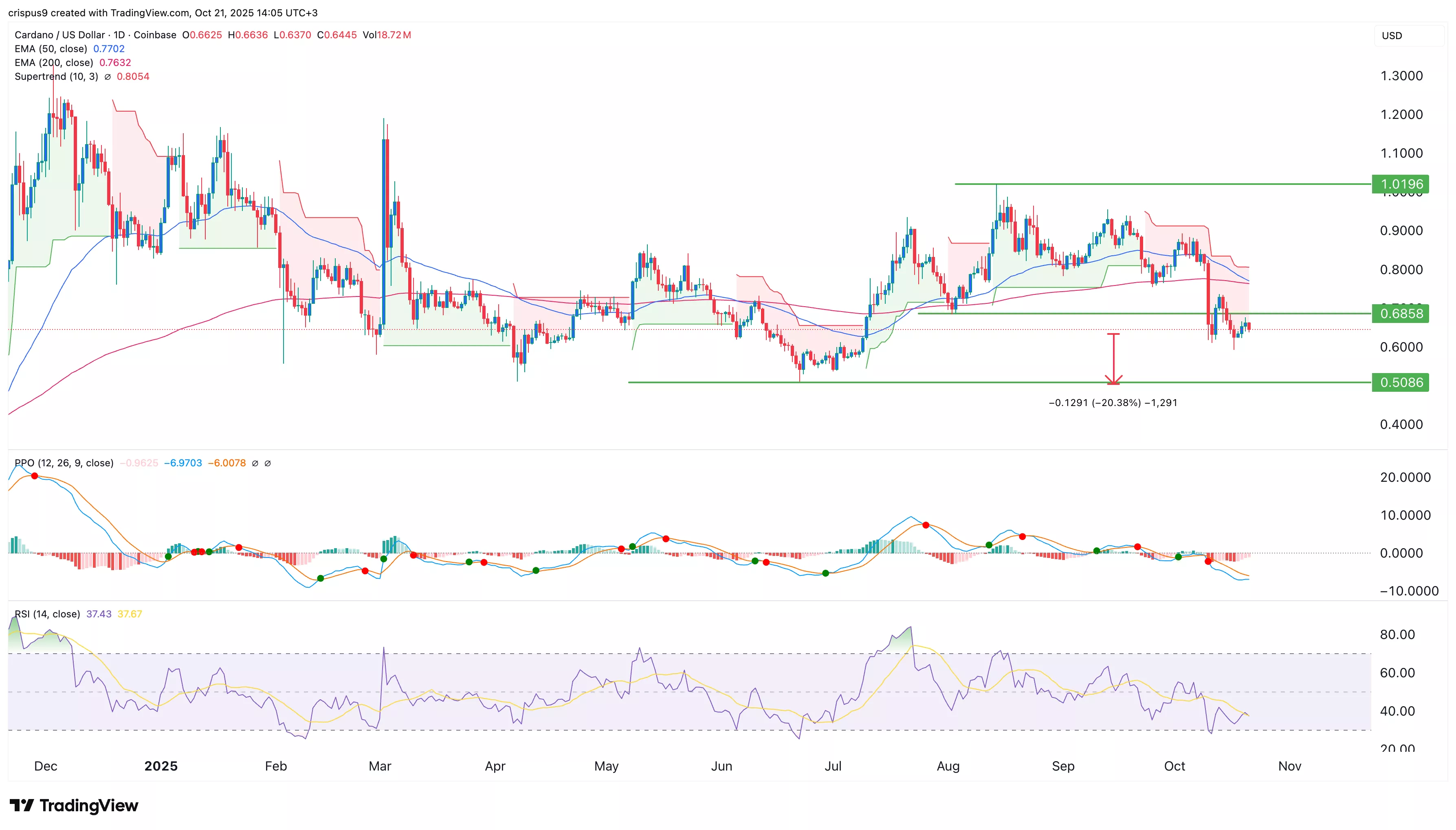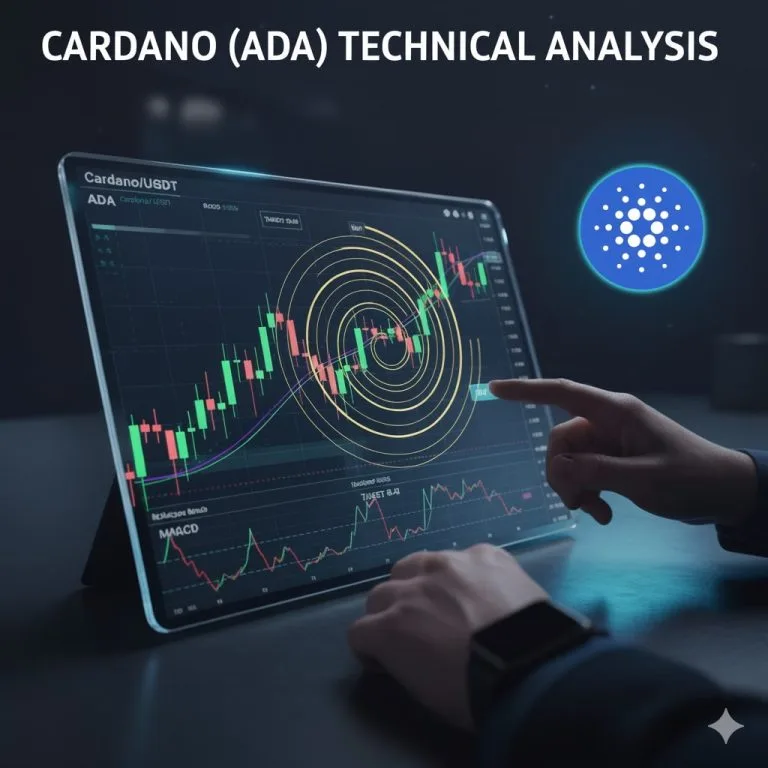Key Takeaways
- Cardano’s price has entered a bear market, experiencing a significant drop of approximately 40% from its August peak.
- Technical indicators suggest a potential further decline of around 20% in the near term.
- The Cardano network’s ecosystem, particularly in Decentralized Finance (DeFi), is showing signs of struggle with declining Total Value Locked (TVL) and low trading volumes.
Cardano Price Enters Bear Market Territory
Cardano (ADA) experienced a significant downturn this month, crashing into bear market territory. The cryptocurrency saw its value drop by approximately 40% from its August high. As of October 25, ADA was trading at $0.6420. Technical analysis indicates that further downside pressure could lead to at least a 20% dip in the cryptocurrency’s price in the immediate future.
Technical Indicators Signal Further Decline
The daily chart for ADA reveals consistent downward pressure over the past few months. The price has fallen from $1.0196 in August down to $0.6330 in late October. This decline mirrors the broader weakness observed in the cryptocurrency market.
ADA’s price broke below the crucial support level at $0.6858 on October 10 and subsequently retested it. This break-and-retest pattern is often viewed as a bearish continuation signal, suggesting that the downtrend is likely to persist.
Adding to the bearish outlook, the 50-day and 200-day moving averages are converging, nearing a death cross. This technical pattern, where a shorter-term moving average crosses below a longer-term one, is considered a significant bearish signal in technical analysis.

Further confirming the negative sentiment, the Supertrend indicator has turned red. Additionally, both the Relative Strength Index (RSI) and the Percentage Price Oscillator (PPO) are trending downwards. The formation of a bearish pennant pattern, characterized by a flagpole and a contracting triangle, also points towards continued price depreciation.
These combined technical signals suggest a potential drop to the year-to-date low of $0.5085, approximately 20% below the current trading price. However, a sustained move above the 200-day Exponential Moving Average (EMA) at $0.80 would invalidate this bearish forecast.
Ongoing Ecosystem Challenges for Cardano
The persistent weakness in Cardano’s price can also be attributed to ongoing challenges within its ecosystem. Data from DeFi Llama indicates that Cardano’s decentralized finance (DeFi) sector is experiencing a downturn. The total value locked (TVL) in its DeFi protocols has decreased by 20% over the last 30 days, settling at $291 million.
A significant portion of this TVL is concentrated in a few key protocols, including Liqwid, Minswap, Indigo, and Splash Protocol. Notably, Cardano’s TVL remains considerably lower compared to other prominent layer-1 blockchain networks such as Solana, Binance Smart Chain (BSC), and Sui.
Cardano’s decentralized exchange (DEX) ecosystem is also showing signs of strain. The total trading volume across its DEXs in the last 24 hours was a modest $1.53 million. This figure starkly contrasts with the volumes handled by major blockchains like Ethereum and Solana, which recorded over $4.17 billion and $4.10 billion, respectively, in the same period.
Furthermore, Cardano holds a minor position in the rapidly expanding stablecoin market. Its stablecoin market capitalization stands at just $36 million, a small fraction of the overall sector which boasts over $300 billion in assets.
These fundamental metrics highlight the difficulties Cardano faces as its development team, led by Charles Hoskinson, continues to focus on building advanced solutions like Hydra and Midnight.
Expert Summary
Cardano’s price has entered a bear market due to technical bearish signals and ongoing ecosystem challenges. Key indicators point to potential further price drops, while low TVL and trading volumes in its DeFi sector suggest investor caution. The network’s future performance will likely depend on the successful development and adoption of its ongoing projects.

